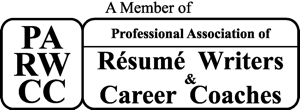iStock | metamorworks
Networking is more important than ever, but many people resist taking the extra steps required to nurture their professional relationships. Here’s a few key networking activities you can undertake to bolster your brand:
1. Be active on LinkedIn.
2. Maintain contact with people you know.
3. Be active in professional associations.
4. Attend professional conferences.
5. Call on old friends.
6. Manage Your Social Networks with Care.
The above recommendations are the long game and should pay dividends over the long-term. However, for those who thrive on more immediate gratification, there is a more direct way to network that ideally has a domino effect. It is a traditional, old-fashioned way of doing things called in-person face-to-face contact with strangers. That’s right my little digital babies. It’s time to ditch the pacifier (digital devices/modes of communication), polish your shoes, and act like a professional.
For this one, there is no list of calls-to-action. Networking in this way is a simple formula of follow-through and follow up. Here are two true, real-life examples of how a little networking in simple situations can open doors you didn’t even know existed.
Example #1: The “Chance Encounter”
This is a tale of a chance encounter, except there are no chance encounters if it’s followed by quick and decisive action. A professional working a job that was not the right fit but needed money coming in, meets up with a friend. When he arrives, his friend is speaking with a woman he doesn’t know. His friend introduces her as an old acquaintance that he randomly bumped into.
They discover they’re in related fields. Our professional has a loyal Instagram Live following for his work-related posts. The old acquaintance has a podcast. This was a fortuitous encounter, providing an unexpected professional opportunity. They agreed to watch/listen to each other’s respective endeavors and parted ways.
It could have ended there. But each person treated this “chance encounter” as a networking opportunity. They followed through. They watched the Instagram Live/listened to the podcast – and followed-up – contacted each other to.
This was followed by a meet-up, which is the ideal progression, but that is the part you have to make happen. While the first meeting was more friendly than professional, the second one was all business and it ended with invitations to appear on each other’s platforms. The partnership worked out so well it, the joint-appearance became regular features. And, yes, an actual happy ending. Our professional was contacted by multiple businesses after participating in several podcasts and accepted a new position with one of them. At last report, it was going very well.
Example #2: The Web
A professional network is not a list of names in your rolodex (please click here if think that’s a watch). It’s a web of names.
A professional loses her job in a corporate restructuring and is searching for a new job with the added obstacle of being unemployed. She reaches out to ten of her strongest contacts (and friends), but does not get any actionable leads. In this case, the traditional networking hasn’t succeeded.
Proactive, she does her research to see if anyone in her web of contacts has a connection, no matter how remote, to her target companies and she comes up with one that pushes the boundaries of six-degrees-of-separation. She gambles and sends her resume with a friendly note. As it turns out, it’s only two degrees of separation. Through the web of their professional contacts, the recipient knows who she is. He can’t help her per se, but the company has an internal list of unpublished job openings he’s happy to forward to her.
I think you know how this example ends. Her determination and web of contacts directly led to her finding a new job. Armed with a back door into one of her targeted companies that significantly expanded her opportunities, she was able to land a new job with them. At last report, it was going very well.
Follow-through and follow-up. Easy.
Philip Roufail contributed to this article.
Scott Singer is the President and Founder of Insider Career Strategies Resume Writing & Career Coaching, a firm dedicated to guiding job seekers and companies through the job search and hiring process. Insider Career Strategies provides resume writing, LinkedIn profile development, career coaching services, and outplacement services. You can email Scott Singer at scott.singer@insidercs.com, or via the website, www.insidercs.com.






